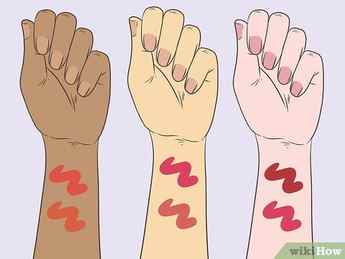Teaching primary colours to kindergarten kids is a fun way to introduce colours and the concept of mixing colour combinations. There are many ways to teach kids all about primary colours. In this section, we have covered some hands-on activities for children to learn about primary colours. Let’s read!
Teaching Primary Colours To Preschoolers

Children have a very short attention span. Therefore, it is important to teach kids in such a way that keeps them engaged while learning. When teaching kids about colours, it is important that we teach them about types of colours too. There are three types of colours – primary colours, secondary colours and tertiary colours. Kids must know all about these colours.
In this article, we have discussed the three primary colours. We have also covered a few activities to help your little one learn about primary colours.
Continue reading to learn about primary colours for kindergarten kids.
What Are Primary Colours?
Let’s take a look at the primary colour definition for children.
Primary colours are the basic colours that can be mixed together to produce new colours. In simple words, primary colours are the source of other colours. The 3 primary colours are red, yellow and blue. When we mix any two primary colours together, we get secondary colours.
Chart Of Primary Colours

The colour wheel is a colour mixing guide that we can use to understand how colours work when mixed together. The colour wheel above will help children to remember primary and secondary colours. The secondary colours are the ones next to the primary colours. For example – next to red and blue is the colour purple, next to red and yellow is the colour orange, and next to yellow and blue is the colour green. This colour wheel is also known as the RYB colour wheel.
How to get vibrant mixes using the right primary colors with watercolor

Let’s take a look at primary colors and how understanding them gets you better mixing results.
You can watch a more or less similar video version on this topic here:

Join my free newsletter and never miss a blog post! You’ll get new blog post notifications directly to your inbox. Receive 5 great sketching resources as a welcome gift for joining my newsletter! Here’s what’s inside:
- How to draw anything (PDF guide)
- Getting started with watercolor (free ebook)
- My favorite tips for creating great sketchbook pages
- My 5-step guide for drawing birds (PDF guide)
- My current watercolor palette layout (PDF guide)
By subscribing, you agree that I may process your information in accordance with my privacy policy

Nancy Zeller
I just finished watching your class and it was really helpful, Julia. Thank you. I am now trying to decipher which brand is best and realize I need to use a few brands depending on the colors I want in my palette. I’d prefer to buy pans already filled but think tubes are going to be better, I just need patience layering and waiting for them to dry in the pans!
Julia
I’m happy to hear that, Nancy! You can’t really go wrong with any of the big names. Pans are more convenient, tubes a bit less expensive. I usually fill my pans in two sessions and let the paint dry overnight. And you don’t even need to fill the pans to the brim for painting. Happy sketching!
Nancy
Thank you. One question, in your course you mention Quinacridone Pink, what brand makes it? I am not finding it.
Julia
My apologies for being unclear. The red quinacridone pigments are often named a bit confusingly, so I probably made up the quin. pink…
For a cool primary red/pink color, you could use quin. red (PV19), quin. violet (PV42) or quin. magenta (PR122), pyrrol red (PR264) is also a great choice, it comes close to the traditional Alizarin Crimson. I like the PV19 variety, very bright and clear – also what I used in the course as my magenta. If you compare the pigment names you should be able to find the corresponding colors, they will all have differing names depending on the manufacturer. Hope that helps!!
Nancy
Thank you, makes sense!
Stephen
I have tried in vain to find benzimidazolone. Who makes it?
Julia
If you search by pigment number you should find it: PY154. Most paint companies call it something else: W&N Winsor Yellow, Schmincke Pure Yellow, and Holbein Imidazolone Yallow are a few name varieties for this pigment. Hope this helps!
Karen
Good morning, Julia – Delighted to find your website. I am new to watercolor (new to “art,” to be fully frank) and have been using various palettes. It’s time to figure out a palette that is more personal to me and my part of the world (Maine’s mountains lakes forests areas, and more broadly the same sort of geography in New Hampshire and Vermont). I would like to start with your vibrant CYM triad and am using Daniel Smith paints. I can find PY151 in the DS line, which is marketed as Azo Yellow. I can find PR122 as DS QuinViolet, and PV42 as DS QuinPink. Blue is my main difficulty, since Phthalo Blue (PB15:0) is tough to find. Can you tell me which specific watercolours you used for the primary CYM triad you’re discussing here? Brand + Marketing Name would be wonderful. I’m really stuck on the blue, because it seems that a non-granulating paint would be desirable for a transparent and vibrant palette, and DS’s PB15 is Manganese Blue Hue (granulating and fairly light in shade). However! I only know what i have read, and much general info is contradictory. Thank you, Julia – your nature sketches are what i strive for. Best, -karen.
Julia
Thank you Karen! Daniel Smith offers Phthalo Blue Green Shade which should work well as a cyan. The pigments I used here were probably Lemon Yellow (PY3) or Winsor Yellow (PY154), Quin. Red/Permanent Rose (PV19) and Phthalo Blue GS (PB15), a mix of Schmincke and Winsor&Newton colors. Remember to add warm versions of these primaries for a well-rounded palette, for landscapes this will come in handy.
Colleen
This post is so helpful! I’ve never thought about going outside of blue, yellow, red as primaries. But it explains why the Daniel Smith six-colour primaries set appealed to me – I knew it basically was two sets of primaries, but I didn’t understand WHY. Now I know. And now I’ll know what to look for in the future when buying individual colours. I love vibrant colours, and couldn’t figure out why using b/y/r was frustrating for me!!
Leave a Comment Cancel Reply

Hello, my name is Julia. I’m an illustrator, naturalist and I love to sketch.
On this blog I share my sketching adventures in nature, ideas for building a creative practice, how to live without social media, and my thoughts about how to be (and stay sane as) an artist in this strange world. Dive deeper into what I write about or browse the archives.
Never miss a blog post with my free newsletter:
Blog Archives
Learn more about:
- Art Techniques + Theory
- Book reviews
- Botanical Sketching
- Creative Business
- Creativity
- Demos + Tutorials
- Digital Minimalism
- Drawing
- Drawing Birds
- Folk Tale Landscapes
- Gouache
- Illustration
- Ink Drawing
- Landscape Sketching
- Life
- Minimalism
- Nature Journaling
- Online courses
- Q&A
- Reviews
- Sketchbook Tours
- Sketching
- Tools + Materials
- Videos
- Watercolor
- Wildlife Sketching




